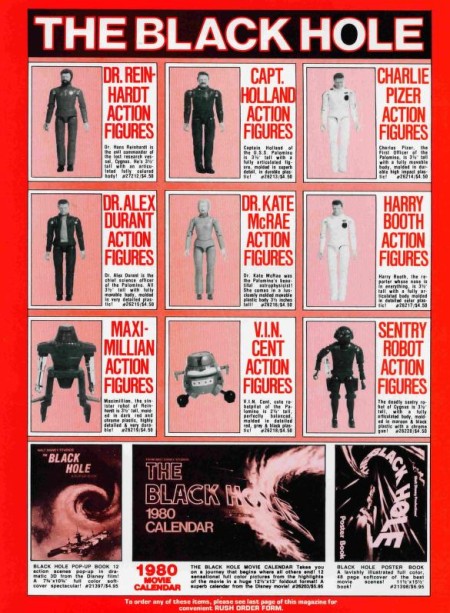1980 Ad for Mego’s Black Hole Action Figures
Yesterday I shared a page from the June, 1980 issue of Warren’s The Rook and mentioned how awesome that it is that the past keeps sharing fun stuff with us. Well, even individual discoveries can share more than we can absorb in a single sitting; check out this full-page Black Hole ad featuring Mego’s Black Hole action figures.
Check this Mego Museum page to get a closer look at the Black Hole action figures.

Related articles
- Ultarama Action Figure Display System (battlegrip.com)
- Sixteen Years Later and the Star Wars Expanded Universe Action Figures Haven’t Changed in Value (battlegrip.com)
One other interesting thing about that particular issue of the Rook comics magazine anthology was that it featured the first installment of the English-language version of the sword-and-sorcery comics serial Voltar, written and illustrated by Alfredo Alcala. The strip was originally published in the Tagalog language in the Philippines in 1963 (the English version is credited in Rook as being penned by editor Bill DuBay—writing under the pseudonym “Will Richardson”—but I think it’s fair to say that what he actually did was adapt the original story written by Alcala).
Alongside illustrators like Jonah Hex co-creator Tony DeZuniga, Nestor Redondo (artist on Rima the Jungle Girl, among others), Alex Niño (artist on House of Mystery, among others), Alcala—who illustrated titles like Swamp Thing and The Unexpected—was one of most highly regarded members of the so-called “Filipino Wave” of artists who drew DC’s horror, military, and western comics during the 1970s (many of them, Alcala included, would work for Marvel and Warren Publishing in the late 1970s/early 1980s).
If you’ll remember, Alcala later illustrated a number of the minicomics that were included with the Masters of the Universe toys produced by Mattel, and he ended up inking the first two issues of DC’s licensed Masters of the Universe comic.
Anyway, Alcala’s Voltar is significant because it was the rare, early creator-owned Alcala work to see print in the United States (and its sword-and-sorcery stylings presaged Alcala’s later work on Marvel’s Conan magazines and comics).